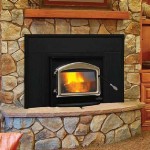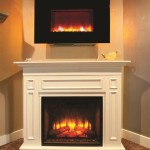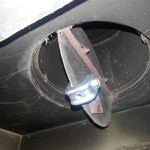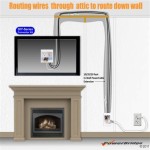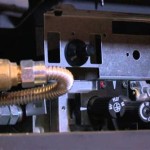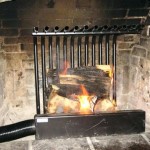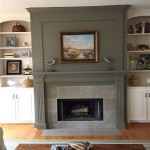DIY Removal of a Brick Fireplace: A Comprehensive Guide
Removing a brick fireplace is a significant undertaking that requires careful planning, preparation, and execution. While it can dramatically alter the aesthetic of a room and potentially increase usable space, it's essential to understand the complexities involved before embarking on this DIY project. This article provides a comprehensive guide to safely and effectively removing a brick fireplace, outlining the necessary steps, tools, and considerations for a successful outcome.
Before commencing any demolition work, a thorough assessment of the fireplace's structure and its relationship to the surrounding building elements is paramount. Fireplaces aren't merely decorative features; they are often integral parts of a building's structure, potentially supporting walls, floors, or the roof. Disturbing these structural components without proper precautions can lead to serious consequences.
Furthermore, the removal process generates a substantial amount of dust and debris. Containment and proper disposal are critical to minimizing disruption and environmental impact. Safety is paramount; appropriate personal protective equipment (PPE) is essential to prevent injuries from falling debris, dust inhalation, and sharp materials.
Key Point 1: Assessment and Planning
The initial phase of removing a brick fireplace involves a comprehensive assessment of the fireplace and its surroundings. This includes a detailed inspection of the fireplace's construction, its connection to the chimney, and its relationship to nearby walls, floors, and the ceiling. Identifying load-bearing elements is crucial. Look for any signs that the fireplace is supporting the structure above, such as beams resting directly on the brickwork or cracks radiating from the fireplace.
A structural engineer should be consulted if there is any doubt about the fireplace's structural role. A professional assessment can provide valuable insights into the fireplace's construction and identify potential hazards. This is particularly important if the building is old or if there are any signs of structural problems. Ignoring this step could result in significant structural damage to the building.
Beyond structural considerations, it’s also essential to check for any utilities running through or near the fireplace. Electrical wiring or plumbing may be concealed within the brickwork and must be safely disconnected or rerouted before demolition begins. A plumber or electrician may be necessary to safely handle these utilities.
The planning phase also involves obtaining any necessary permits. Local building codes often require permits for demolition work, especially if it involves structural alterations. Contacting the local building department will provide information on permit requirements and ensure compliance with regulations. Failure to obtain the necessary permits can result in fines and delays.
Finally, create a detailed plan for the removal process. This plan should outline the sequence of steps, the tools and equipment needed, and the schedule for the project. A well-defined plan will help ensure a smooth and efficient process.
Key Point 2: Preparation and Safety Measures
Preparation is critical to a safe and efficient demolition project. The first step is to protect the surrounding area from dust and debris. Cover floors with drop cloths or plastic sheeting, and seal off doorways and vents with plastic sheeting and tape. This will help contain the dust and prevent it from spreading throughout the house.
Personal protective equipment (PPE) is essential for protecting against injuries. This includes safety glasses, a dust mask or respirator, work gloves, and sturdy footwear. Safety glasses will protect eyes from flying debris, and a dust mask or respirator will prevent inhalation of harmful particles. Work gloves will protect hands from cuts and abrasions, and sturdy footwear will protect feet from falling objects.
Before starting the demolition, disconnect any utilities that are connected to the fireplace. This includes electrical wiring, gas lines, and any other utilities. A qualified professional should handle the disconnection of gas lines. Ensure that all utilities are safely disconnected before proceeding with the demolition.
Gather the necessary tools and equipment. This may include a sledgehammer, cold chisel, brick hammer, pry bar, drill with masonry bits, and a wheelbarrow or garbage cans for debris removal. Ensure that tools are in good working condition and that the correct tools are selected for each task.
Consider using a demolition saw with a diamond blade for cutting through brick and mortar. This will make the demolition process faster and easier. However, a demolition saw can generate a significant amount of dust, so it is important to use a dust collection system or wear a respirator.
A debris chute can be helpful for removing debris from upper floors. A debris chute is a temporary structure that allows debris to be safely and efficiently transported to the ground level. This can save time and reduce the risk of injury.
Key Point 3: Demolition Process and Debris Removal
The demolition process should be approached systematically, starting from the top of the fireplace and working downwards. Begin by removing any decorative elements, such as mantels, fireboxes, and hearth extensions. These elements are typically attached with screws, nails, or mortar and can be removed with hand tools.
Once the decorative elements have been removed, start breaking down the brickwork using a sledgehammer and cold chisel. Position the chisel at the mortar joints and strike it with the sledgehammer to break the bond between the bricks. Work slowly and carefully to avoid damaging the surrounding walls and floors. It is often easier to remove smaller sections of brick at a time rather than trying to remove large chunks.
As the brickwork is removed, load the debris into wheelbarrows or garbage cans and transport it to a designated disposal area. Heavy-duty garbage bags can also be used for smaller debris. Avoid piling debris too high, as this can create a safety hazard. Consider renting a dumpster for larger demolition projects.
Pay close attention to the chimney connection as the demolition progresses. The chimney may be supported by the fireplace structure and must be properly supported before the fireplace is removed. If the chimney is not properly supported, it could collapse. If the chimney is no longer needed, it can be capped off at the roofline or removed entirely by a professional.
Once the fireplace has been completely removed, inspect the underlying surface for any damage. Repair any cracks or holes in the walls or floors. Consider consulting with a contractor or structural engineer to ensure structural integrity, especially if the fireplace was supporting a significant load.
Proper debris disposal is essential. Depending on local regulations, brick and mortar may be considered construction waste and require special handling. Contact a local waste management company to determine the proper disposal methods. Some recycling centers may accept clean brick and mortar for reuse. Do not dispose of construction waste in regular household trash.
Following the removal, consider the finishing touches necessary to restore the space. This might involve patching and painting walls, installing new flooring, or adding decorative elements to create a new focal point in the room. The removal of a fireplace provides an opportunity to completely transform the space.
Removing a brick fireplace is a difficult and potentially dangerous task. If there is any doubt about the ability to safely complete the project, it is best to hire a professional demolition contractor. Professional contractors have the experience, equipment, and insurance necessary to safely and efficiently remove a fireplace. They can also ensure compliance with all applicable building codes and regulations.

Removing A Brick Fireplace

How To Remove Brick The Easy Way Project Allen Designs

Simple Ways To Remove A Brick Fireplace With S Wikihow

Simple Ways To Remove A Brick Fireplace With S Wikihow

Simple Ways To Remove A Brick Fireplace With S Wikihow

Removing Fireplace S Brick Facade Not So Hard

Latest Diy Project Fireplace Chimney Removal For A Nicer Living Room Jeff Geerling
Removing Brick Fireplace Diy Or Hire A Pro Hearth Com Forums Home
How To Remove My Too Big Hearth Help Com Forums Home

Fireplace Demolition Day The Handyman S Daughter
Related Posts

